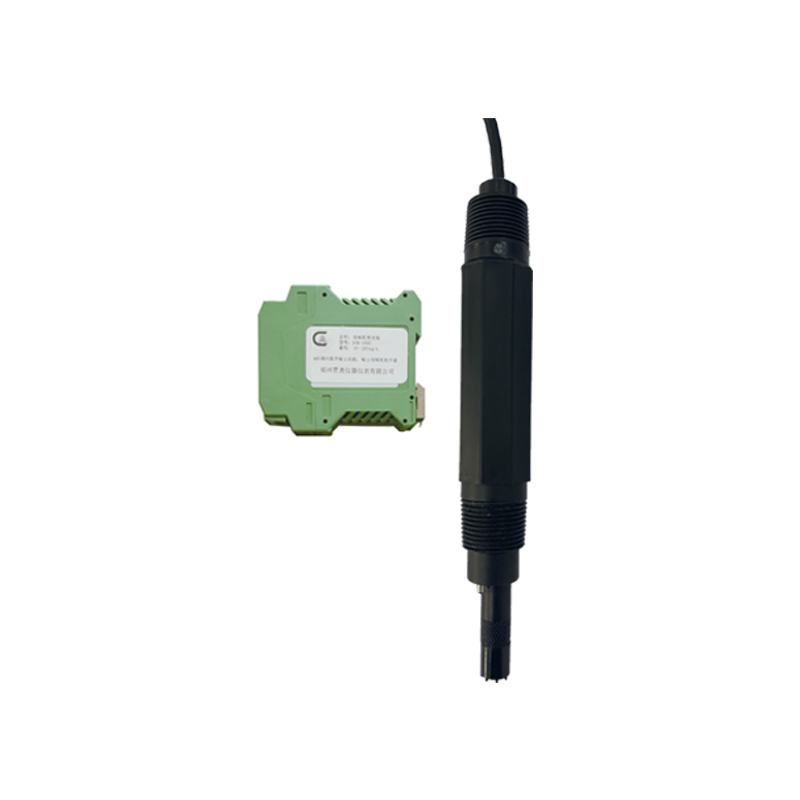Dissolved oxygen electrode is an electrochemical sensor for measuring dissolved oxygen concentration in water or other liquids. In order to ensure the accuracy and reliability of dissolved oxygen electrode, regular calibration is very important. The following are the calibration steps of dissolved oxygen electrode in general.

Material preparation:
Dissolved oxygen electrode
Calibration solution (usually two known concentrations of dissolved oxygen standard solutions, such as air saturated water and zero oxygen water)
thermometer
Clean cotton swabs or cloth
Calibration steps :
1.Preparation of calibration solution : Select the appropriate dissolved oxygen calibration solution, usually including 100 % saturated dissolved oxygen calibration solution and 0 % dissolved oxygen calibration solution. These calibration solutions can be purchased on the market to ensure that their concentration and quality meet the experimental requirements.
2. Check the state of the electrode : check the state of the dissolved oxygen electrode, including whether the electrode is clean, whether there is damage or pollution. If the electrode tip is contaminated, it should be cleaned with a suitable cleaning solution first, and then rinsed with pure water.
3.Zero calibration : The dissolved oxygen electrode is immersed in the 0 % dissolved oxygen calibration solution to ensure that the electrode head is completely immersed, and the liquid is stirred to make it fully contact. Wait for a period of time until the electrode is stable and record the electrode reading.
4.Correction zero point : According to the electrode reading and the concentration of the calibration solution, the zero point correction is performed using the relevant functions on the calibration device or instrument. Usually, the calibration device will automatically correct the zero point according to the deviation between the reading and the calibration solution concentration.
5. Full-scale calibration : The dissolved oxygen electrode is immersed in 100 % saturated dissolved oxygen calibration solution to ensure that the electrode head is completely immersed, and the liquid is stirred to fully contact. Wait for a period of time until the electrode is stable and record the electrode reading.
6.Correction full range : According to the electrode reading and the concentration of the calibration solution, the full range correction is performed using the relevant functions on the calibration device or instrument. Usually, the calibration device automatically performs full-scale correction based on the deviation between the reading and the concentration of the calibration solution.
7.Temperature compensation : The dissolved oxygen concentration is related to temperature, so temperature compensation should be performed when calibrating the dissolved oxygen electrode. According to the actual application, according to the temperature of the calibration solution and the electrode reading, the temperature compensation function on the calibration device or instrument can be used to make corresponding corrections.
8.Calibration records : After the calibration, the concentration of the calibration solution, electrode reading, calibration time and temperature should be recorded for subsequent data analysis and comparison.
9.Test the calibration results : After the calibration is completed, the samples with known dissolved oxygen concentration can be used for verification to ensure that the measurement results of the electrode are accurate and reliable.
10. Regular calibration : The performance of dissolved oxygen electrode may change over time, so it is recommended to calibrate regularly to maintain the accuracy and reliability of the electrode. The calibration frequency can be determined according to the actual application requirements and manufacturer requirements.
11. Cautions : In the calibration of dissolved oxygen electrode, attention should be paid to follow the instructions of the electrode and the calibration solution to avoid cross-contamination and misoperation. At the same time, the quality and concentration of the calibration solution should be kept stable, and the expired or poor quality calibration solution should be avoided.
It should be noted that dissolved oxygen electrodes of different models and manufacturers may have different calibration steps and requirements. Therefore, in actual operation, the electrodes and manufacturers ' operation manuals should be strictly followed for calibration. In addition, in order to ensure the accuracy of the calibration results, it is recommended that the calibration operation be performed by trained and skilled technicians.



